The Melt-in-Your-Mouth Perfect Beef Rib Roast Recipe
Crafting the perfect beef rib roast might seem like a culinary challenge that intimidates home cooks.
Skilled chefs know this cut demands respect and precision.
Tender, juicy meat starts with selecting high-quality beef from trusted local sources.
Marbling matters significantly when choosing your roast, as fat content directly impacts flavor and texture.
Rich, savory aromas will fill your kitchen during slow roasting, creating anticipation for an exceptional meal.
Mastering temperature control and seasoning techniques ensures a magnificent centerpiece that impresses even discerning palates.
You’ll savor every succulent bite of this classic dish that transforms an ordinary dinner into a memorable feast.
Your Guide to Cooking the Perfect Beef Rib Roast
Beef Rib Roast Ingredients Checklist
Main Protein:Seasoning Blend:Cooking Essentials:Cooking Instructions for Juicy Rib Roast
Step 1: Prepare the Oven
Fire up your oven to a scorching 450°F (230°C).
This high initial temperature will help create a beautiful golden crust on the roast.
Step 2: Massage the Meat
Lavish your beef rib roast with a flavor-packed rub using:Massage these ingredients all over the roast, ensuring every inch is coated with the aromatic blend.
Step 3: Sear to Perfection
Heat a heavy, oven-safe skillet until it’s blazing hot.
Carefully place the roast in the pan and sear each side until it develops a rich, caramel-brown crust.
This should take about 4-5 minutes per side.
Step 4: Roast with Precision
Transfer the seared roast directly in the skillet to the preheated oven.
Start with 15 minutes at 450°F, then lower the temperature to 325°F (165C).
Continue roasting until the internal temperature reaches:Total cooking time will depend on the size of your roast.
Step 5: Let It Rest
Remove the roast from the oven and let it relax for 15-20 minutes.
This allows the juices to redistribute, ensuring a moist and tender result.
Step 6: Slice and Serve
Carve the roast into beautiful slices and serve alongside your favorite side dishes.
Enjoy the mouthwatering result of your culinary masterpiece!
Tricks for a Tender and Flavorful Rib Roast
How to Store and Reheat Beef Rib Roast Properly
Pair Your Beef Rib Roast with These Sides
Variations to Elevate Your Rib Roast Experience
FAQs
Look for a well-marbled, bright red roast with a thick fat cap. Choose prime or choice grade for best flavor and tenderness. Ask your butcher for a center-cut roast with bones still attached for maximum juiciness.
Use a meat thermometer to check. 130F means medium-rare, 140F is medium, and 150F is medium-well. Always remove the roast 5-10 degrees before desired temperature, as it continues cooking while resting.
Season the roast up to 24 hours in advance and store uncovered in the refrigerator. This helps dry the surface for better browning and allows seasonings to penetrate the meat deeply.
Resting allows juices to redistribute throughout the roast, ensuring each slice remains moist and flavorful. Let the meat rest 15-20 minutes before carving to prevent dry, tough meat.
Print
Perfect Beef Rib Roast Recipe
- Total Time: 2 hours 35 minutes
- Yield: 10 1x
Description
Succulent beef rib roast promises a luxurious culinary journey through rich, herb-infused flavors that elevate classic Sunday dinner traditions. Meat lovers will savor each tender, perfectly seasoned slice that brings robust taste and elegant dining to the table.
Ingredients
Meat:
- 4.5 kilograms (10 pounds) beef rib roast, bone-in
Herbs and Spices:
- 1 tablespoon fresh rosemary, chopped
- 1 tablespoon fresh thyme, chopped
- 1 teaspoon salt
- 1 teaspoon black pepper
- 1 teaspoon onion powder
- 4 cloves garlic, minced
Cooking Liquids and Oil:
- 2 tablespoons olive oil
- 1 cup beef broth (optional for roasting)
Instructions
- Prepare the beef rib roast by patting it dry with paper towels to ensure a perfect sear and seasoning absorption.
- Create a robust herb blend by mixing rosemary, thyme, garlic, salt, pepper, and onion powder in a small bowl.
- Massage the roast generously with olive oil, then thoroughly coat with the prepared herb mixture, ensuring even coverage.
- Heat a heavy, oven-safe skillet over high heat until it’s smoking hot and ready for searing.
- Carefully place the seasoned roast in the skillet, searing each side for 3-4 minutes to develop a rich, golden-brown crust that locks in flavors.
- Transfer the skillet with the seared roast directly into a preheated oven at 450F (230C) for 15 minutes to initiate high-temperature cooking.
- Reduce the oven temperature to 325F (165C) and continue roasting for approximately 1.5-2 hours, depending on the roast’s size and desired doneness.
- Use a meat thermometer to check internal temperature, aiming for 130F for medium-rare or 140F for medium.
- Remove the roast from the oven and tent loosely with aluminum foil, allowing it to rest for 15-20 minutes to redistribute juices and ensure maximum tenderness.
- Slice against the grain into thick, juicy portions and serve with complementary side dishes.
Notes
- Invest in a quality meat thermometer to ensure precise doneness without cutting into the roast and losing precious juices.
- Choose a well-marbled cut of beef for maximum tenderness and rich flavor, preferably from a trusted butcher who can recommend the best selection.
- Bring the roast to room temperature before cooking to guarantee even heat distribution and consistent cooking throughout the meat.
- Allow generous resting time after cooking, which helps redistribute internal juices and results in a more succulent and tender roast.
- Prep Time: 20 minutes
- Cook Time: 2 hours 15 minutes
- Category: Dinner
- Method: Roasting
- Cuisine: American
Nutrition
- Serving Size: 10
- Calories: 450
- Sugar: 0 g
- Sodium: 400 mg
- Fat: 30 g
- Saturated Fat: 12 g
- Unsaturated Fat: 18 g
- Trans Fat: 0 g
- Carbohydrates: 0 g
- Fiber: 0 g
- Protein: 42 g
- Cholesterol: 120 mg
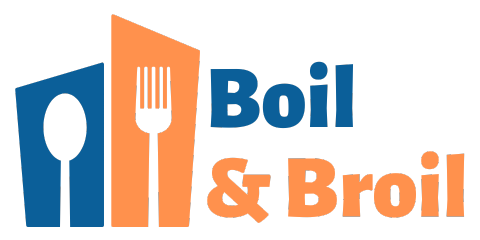
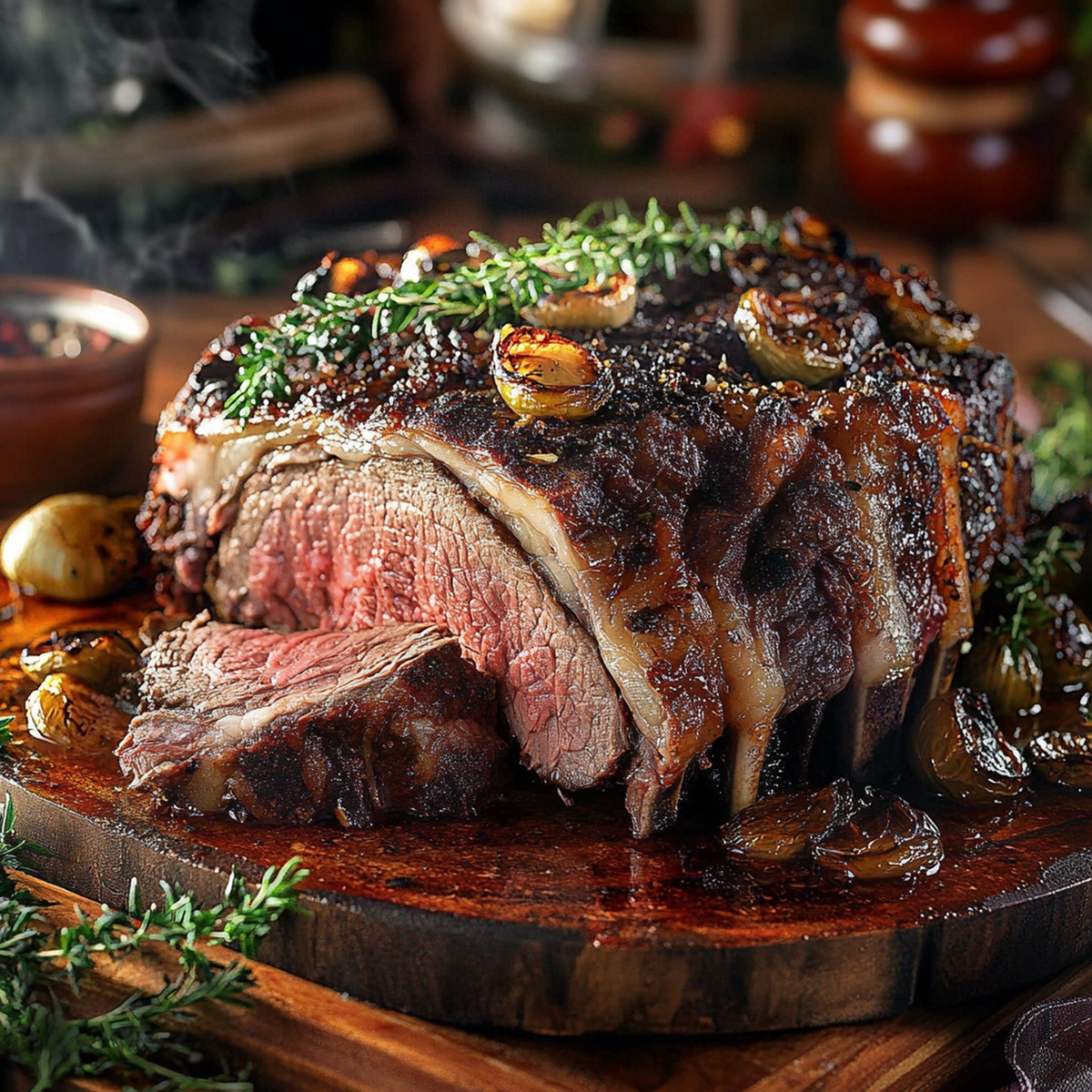
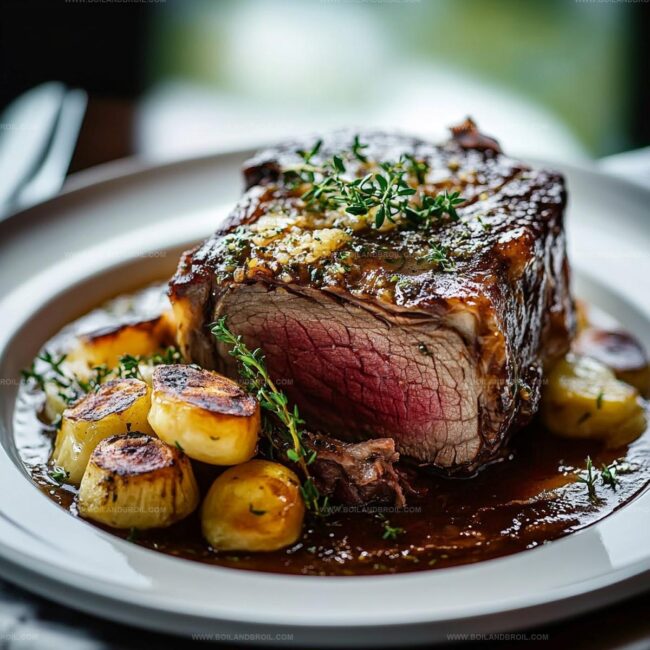
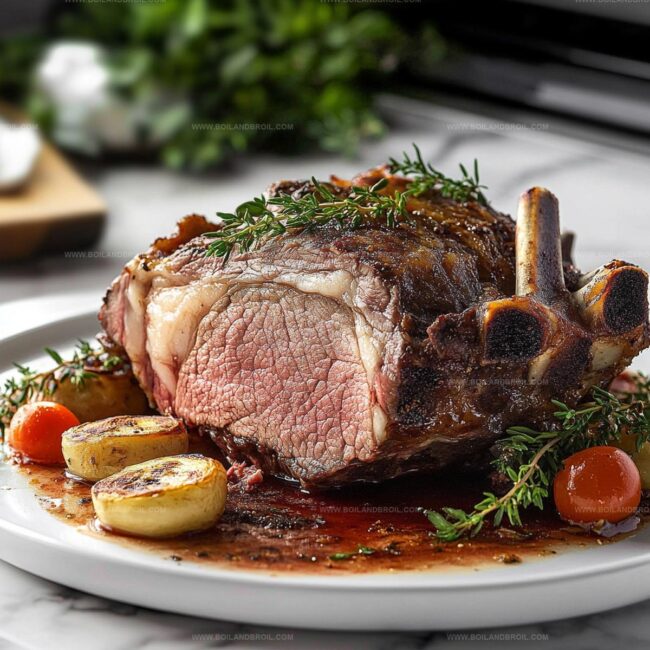
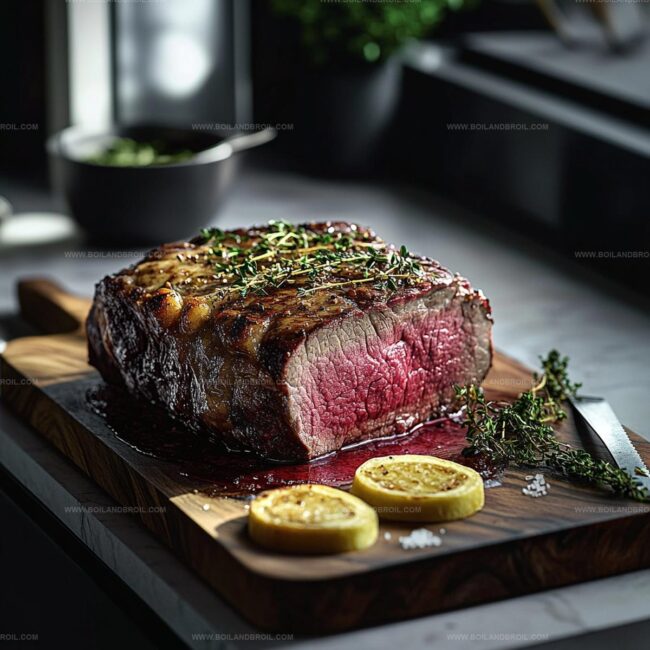
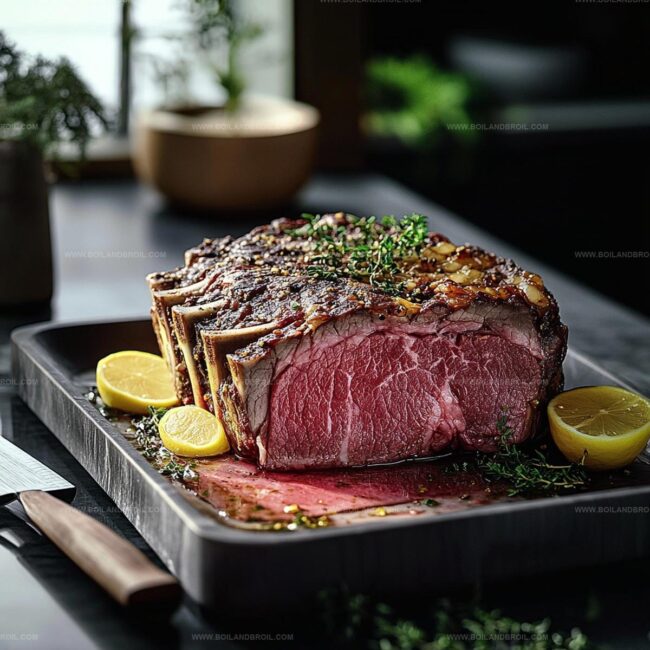
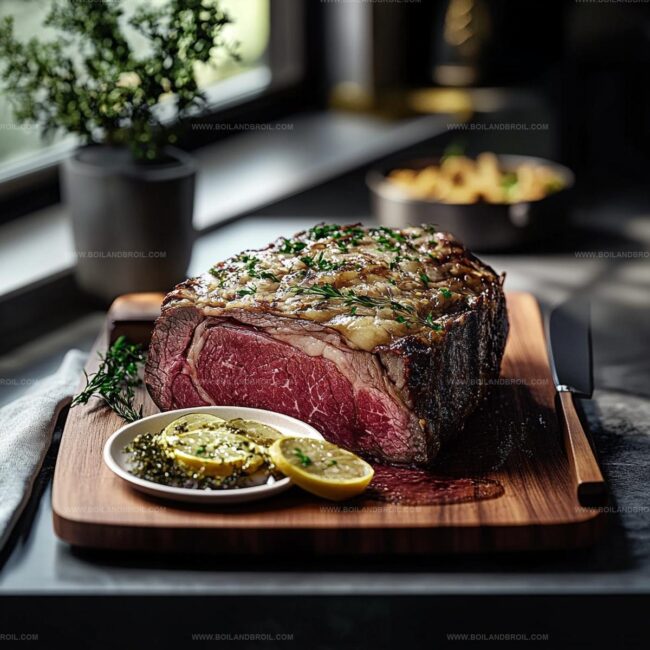

Jack Sullivan
Founder & Culinary Storyteller
Expertise
Single-recipe development with a narrative approach, Culinary storytelling and food history, Seasonal and regional ingredient utilization, Home cooking techniques adapted for modern kitchens
Education
New England Culinary Institute (Montpelier, VT)
Certificate in Culinary Arts
Focused on farm-to-table cooking, sustainable practices, and modern plating techniques.
Asheville-Buncombe Technical Community College
Associate Degree in Culinary Arts
Emphasized Southern Appalachian cuisine and local ingredient sourcing.
Jack grew up surrounded by smoky skillets and handwritten recipes in the mountains of North Carolina. His roots in Appalachian cooking shaped the way he sees food – as something that connects people, tells a story, and holds meaning.
With hands-on training and a background in sustainable, regional cooking, Jack started Boil And Broil to make meaningful meals more accessible. He’s all about one-dish recipes that are simple to follow but rich with flavor and history.